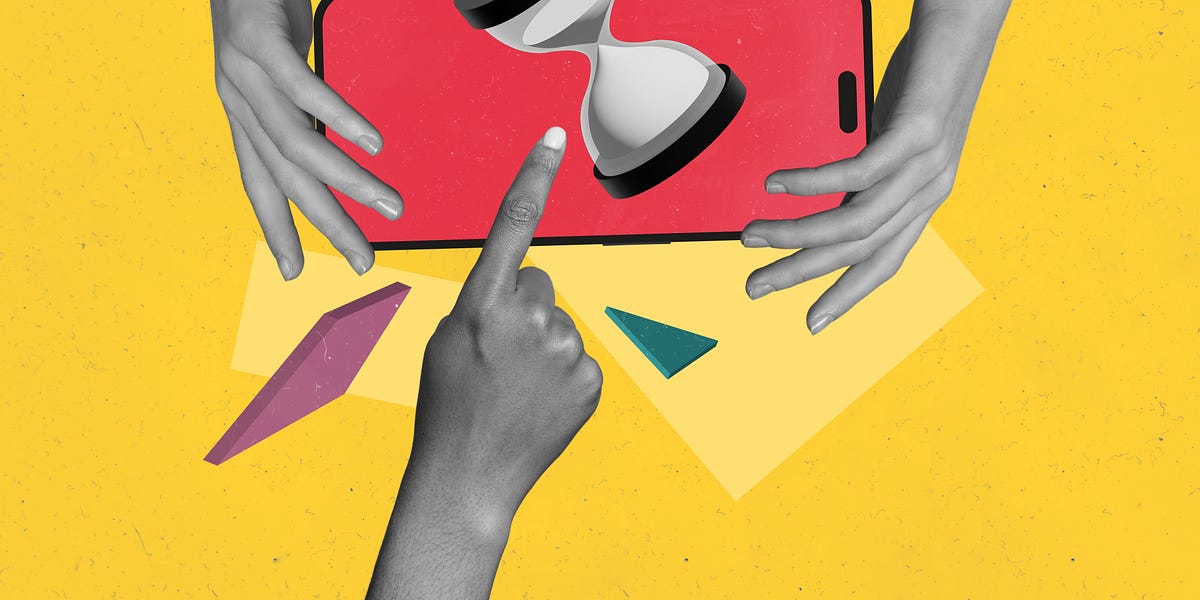LAST WEEK’S WASHINGTON POST investigation into the 2022 death of 13-year-old Jay Taylor in Gig Harbor, Washington, was almost impossible to read. It revealed how vicious online predators manipulated and coerced a vulnerable teenager into livestreaming his own suicide—a tragedy that played out entirely on social media.
Jay’s story is an extreme example of something every young person now understands instinctively: The internet can be both a connection and a catastrophe, and often within the same scroll.
That’s why it’s so important that administrators and teachers limit cell phone use in school—and that parents do the same at home. Since Florida led the way in 2023, thirty-five states have passed restrictions on cell phone use in classrooms. In eighteen states and the District of Columbia, phones are banned during school hours. New York—where I am a senior in high school—is one of them.
New York is now implementing the Distraction-Free Schools Act, backed by Gov. Kathy Hochul (D) and passed by the legislature as part of the state’s annual budget. This plan limiting smartphone use during the school day isn’t just about improving focus in class; it’s about recognizing that the digital environment itself has become a public-health concern. By reducing constant exposure to social media pressures and notifications, the policy gives students a rare thing in 2025: a daily stretch of offline time to think, interact, and breathe.
I’ve already seen the difference this new law makes in my own New York City public high school. Before the law took effect, the average hallway interaction was half-conversation, half-scroll. Students texted through lectures, refreshed group chats during lunch, and flinched at every vibration that might mean judgment or exclusion. I’ve seen classmates spiral after receiving a cruel group-chat message or simply not getting enough likes for a photo posted online. The digital world is a constant source of invisible, insidious stress.
Even when we look calm, our nervous systems are running hot.
Now, the building feels different. Hallways are louder in the best way—people actually talking. Teachers aren’t competing with screens. You can feel the collective exhale of a community that’s no longer half-online. The ban isn’t perfect, but it’s a reset button we desperately needed.
But New York’s initiative is more than a ban. The state is leading the way in youth-driven digital innovation with the New York #HalfTheStory Teen Tech Council, where I serve as a council member. #HalfTheStory is a youth-led nonprofit dedicated to improving the next generation’s relationship with technology. Our message is simple: Real digital wellness doesn’t come from confiscation; it comes from collaboration to limit the harms that teenagers can experience online.
The link between constant digital stress and mental-health risk is clear. Social media can amplify isolation, comparison, and coercion—sometimes to devastating effect, as Jay Taylor’s story shows. Giving students structured offline time helps, but it isn’t enough on its own. We need to make sure that when kids feel overwhelmed, they encounter adults trained to ask the right questions and peers equipped to listen without judgment.
Here are some thoughts on what that could look like:
Integrate digital-wellness education into advisory periods or health classes so students learn to set boundaries, spot online manipulation, and seek help early.
Train teachers and counselors in evidence-based suicide-prevention screening. A few simple questions (such as those in the Columbia Protocol, developed by the Columbia Lighthouse Project, where I’m an intern) can uncover silent distress before it escalates.
Measure well-being, not just compliance. Success shouldn’t be counted in phones locked away but in calmer classrooms and stronger connections.
Keep youth at the center. The Teen Tech Council model—students being invited to support the effective implementation of distraction-free schools statewide—should be the rule, not the exception.
School cellphone bans, like the one in New York, won’t solve every danger on the internet, but they’re a reasonable first step toward addressing one of the most pressing dangers facing teenagers like me. What matters most is the signal the state is sending: that protecting mental health is now a collective responsibility. That’s a culture shift worth fighting for.
IT’S UP TO PARENTS TO FOLLOW UP after school hours, to set limits on phone and computer use at home for younger students, and to make sure that they are not wandering into unmonitored spaces online. Jay, for example, met his predators on Discord, a platform I’ve often used. It is widely known for gaming—but it is also a place where private, unsupervised chatrooms can expose kids to danger.
In my own home, my parents used to set rules that, at the time, felt strict—no phones in bedrooms at night, screens off at dinner, and Discord closed while I did homework. I used to roll my eyes, but now I see how they helped. Having boundaries built in meant I couldn’t scroll myself into exhaustion or disappear into online noise. What I needed more than freedom was structure and conversation about why those limits mattered.
Still, there were times the rules didn’t work. Sometimes I’d sneak my phone back into my room or open new chat servers my parents didn’t know about. What worked best wasn’t the restrictions—it was when my parents talked with me about why they were setting the limits, instead of just enforcing them.
The most important thing parents can do isn’t just restrict—it’s engage. Ask what your kids are seeking, whom they’re talking to, what’s showing up on their feeds. Talk about online pressure and manipulation the same way you’d talk about drugs or driving. And listen without panic so your kids don’t hide what’s really happening.
The goal isn’t to take away technology—it’s to teach balance, awareness, and trust. Laws limiting cell phones in the classroom give students a pause during the school day. What happens after that pause depends on the adults willing to guide us through the rest of our lives.


